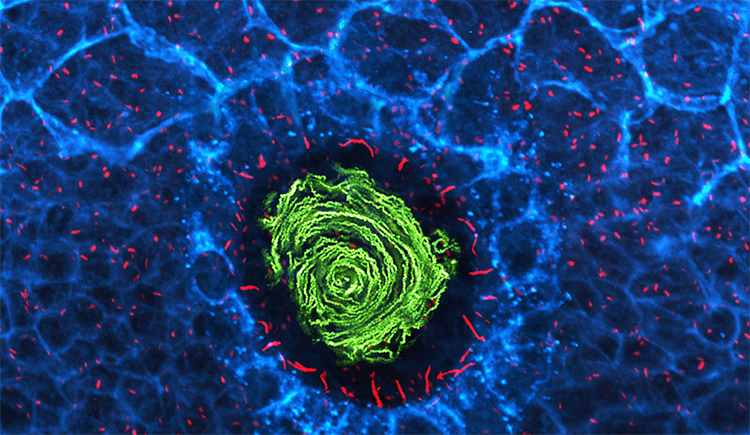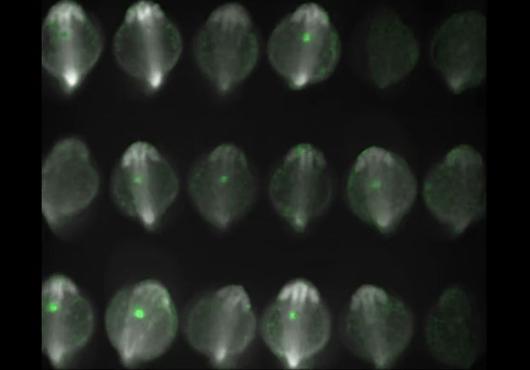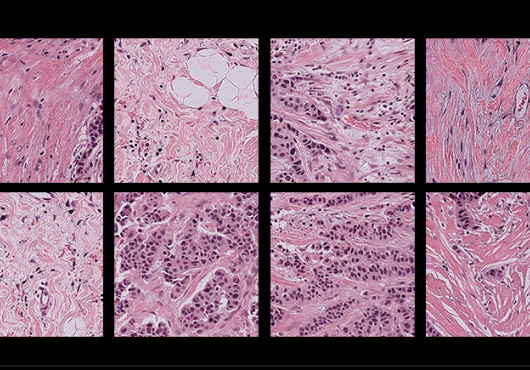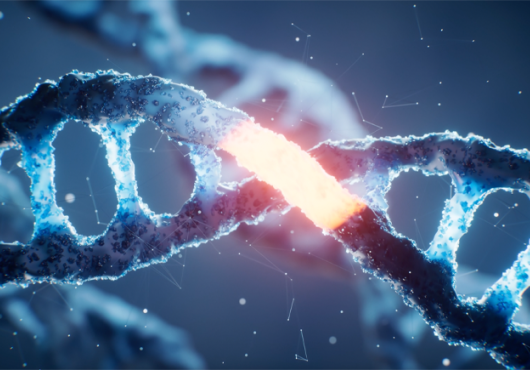
Scientists have found how cilia — tiny whiplike projections on the surfaces of cells — help shape the left-right body plan of the developing organism. Image: Shiaulou Yuan Lab, Mass General
Although the human body is externally symmetric across the left-right axis, there are remarkable left-right asymmetries in the shape, size, and positioning of many internal organs, including the heart, lungs, liver, stomach, and brain. These asymmetries can range from benign to serious, causing a range of conditions that affect multiple organs.
Developmental biologists have long been fascinated by how this asymmetry arises in the first place.
Scientists have long known that left-right asymmetry occurs during early embryonic development, driven by a structure called the left-right organizer, made up of a small cluster of cells. Within the “organizer,” motile cilia, hairlike structures on the surface of cells, beat rapidly to create a leftward directional flow of extracellular fluid as the first outward sign of a left-right difference.
And while research has shown that this early flow is critical in the distinction of right from left, just how this flow is sensed and translated into left-right asymmetry has remained unknown.
Science & Medicine, Delivered
Harvard Medicine magazine in your inbox



